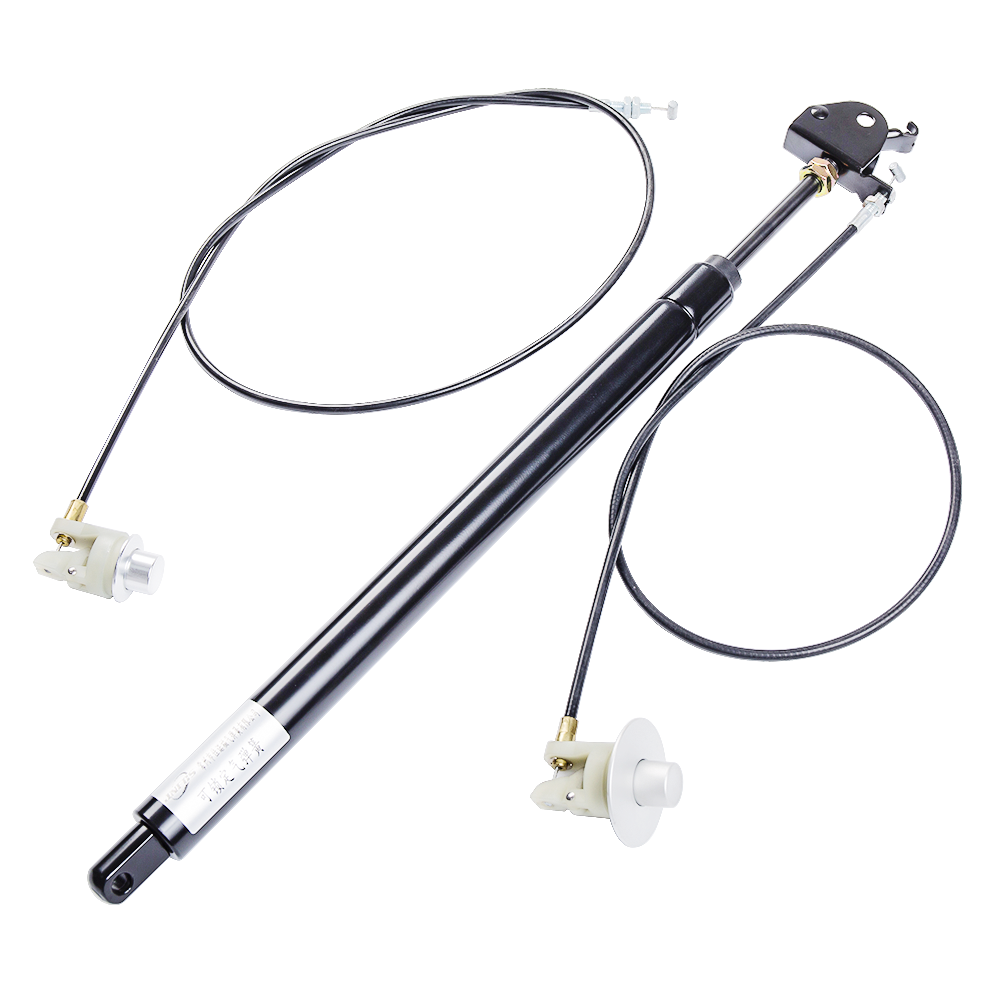Lockable Gas Springs require special attention to some key factors during installation and maintenance to ensure their normal operation, extended service life, and equipment safety. Here are some things to note when installing and maintaining lockable gas springs:
When installing lockable gas springs, you need to ensure that the installation location can withstand the required load and provide sufficient support. Generally, gas springs should be installed at support points close to the load to reduce unnecessary force.
The installation angle of the gas spring should be determined according to the direction of movement of the equipment, and the working axis of the gas spring is usually required to be consistent with the direction of movement of the equipment. Avoid installation angles that are too large or too small, otherwise it may affect the locking function and service life of the gas spring.
During installation, it is necessary to ensure that the gas spring has enough space to freely expand and contract to avoid too tight installation that causes the gas spring to fail to work properly.
Lockable gas springs usually have a certain locking direction or locking point. During installation, it is necessary to confirm whether the location and function of the locking point can be properly connected. The correct installation direction ensures that the gas spring can be locked in time when needed to prevent the equipment from becoming unstable.
When selecting a gas spring, it is necessary to select the appropriate specifications and load-bearing capacity according to the actual needs of the equipment. If the gas spring is overloaded, it will cause it to fail prematurely and even cause a safety accident. Therefore, before installation, you should fully understand the load of the equipment to ensure that the working pressure of the gas spring is within the appropriate range.
During the installation process, pay attention to whether the locking and release system of the gas spring can be safely operated when needed. Avoid touching the locking mechanism or release button during the installation process to prevent the gas spring from being released at an inappropriate time.
During installation, ensure that the connection between the gas spring and the fixed component is firm to avoid looseness. A loose connection may cause the gas spring to fail or affect its locking function. Fixed components such as bolts and nuts should be tightened to the specified torque value to ensure stability.
Regularly check the operating status of the gas spring, including its locking and release functions. The gas spring can be checked by manually operating it to ensure that the locking mechanism works properly and releases smoothly. If it is found that the locking is difficult or not smooth, it should be checked or replaced in time.

The air tightness of the lockable gas spring is very important because gas leakage can cause the gas spring to fail. Regularly check whether there are oil stains, gas leakage marks or cracks on the surface of the gas spring. If abnormalities are found, they should be repaired or replaced in time.
The performance of lockable gas springs may be affected by external environmental factors such as temperature, humidity, and dust. In particular, when used in high or low temperatures, humid or dusty environments, gas springs require additional protection. Clean the surface of the gas spring regularly to prevent dust or corrosive substances from accumulating and affecting its performance.
Some gas springs may require regular lubrication to reduce friction and extend their service life. Check the lubrication status of the gas spring. If dryness or roughness is found, you can add an appropriate amount of lubricant (according to the type of lubricant recommended by the manufacturer). However, excessive lubrication may affect the sealing of the gas spring, so lubrication should be moderate.
Long-term and frequent use of the locking function may accelerate the wear of the gas spring. To extend the service life of the gas spring, avoid excessively frequent locking and unlocking, especially when locking is not required. Minimize the burden on the locking mechanism.
The performance of the gas spring may be affected in extreme ambient temperatures (such as high or low temperature environments). Regularly check whether the gas spring can work stably in the current environment. If the ambient temperature is too high or too low, you may need to choose a more adaptable gas spring or take additional temperature control measures.
Lockable gas springs should avoid severe impact or vibration during operation, which will affect the sealing performance of the gas spring and shorten its service life. Regularly check the shell of the gas spring for cracks, deformation and other problems to ensure that it can withstand the operating load of the equipment.
Even under normal use, gas springs have a certain service life. With the increase of service life, the performance of gas springs will gradually decline, especially in terms of load capacity, locking stability and sealing performance. Regularly evaluate the use of gas springs and replace aging or damaged gas springs in time.
The installation and maintenance of lockable gas springs require special attention to their load capacity, locking system, working environment and regular maintenance. Correct installation can ensure the function and safety of gas springs, while scientific maintenance can effectively extend the service life of gas springs and avoid equipment failures and safety hazards. Regular inspection, cleaning and lubrication and other maintenance work are important measures to ensure its long-term stable operation.


 English
English русский
русский











